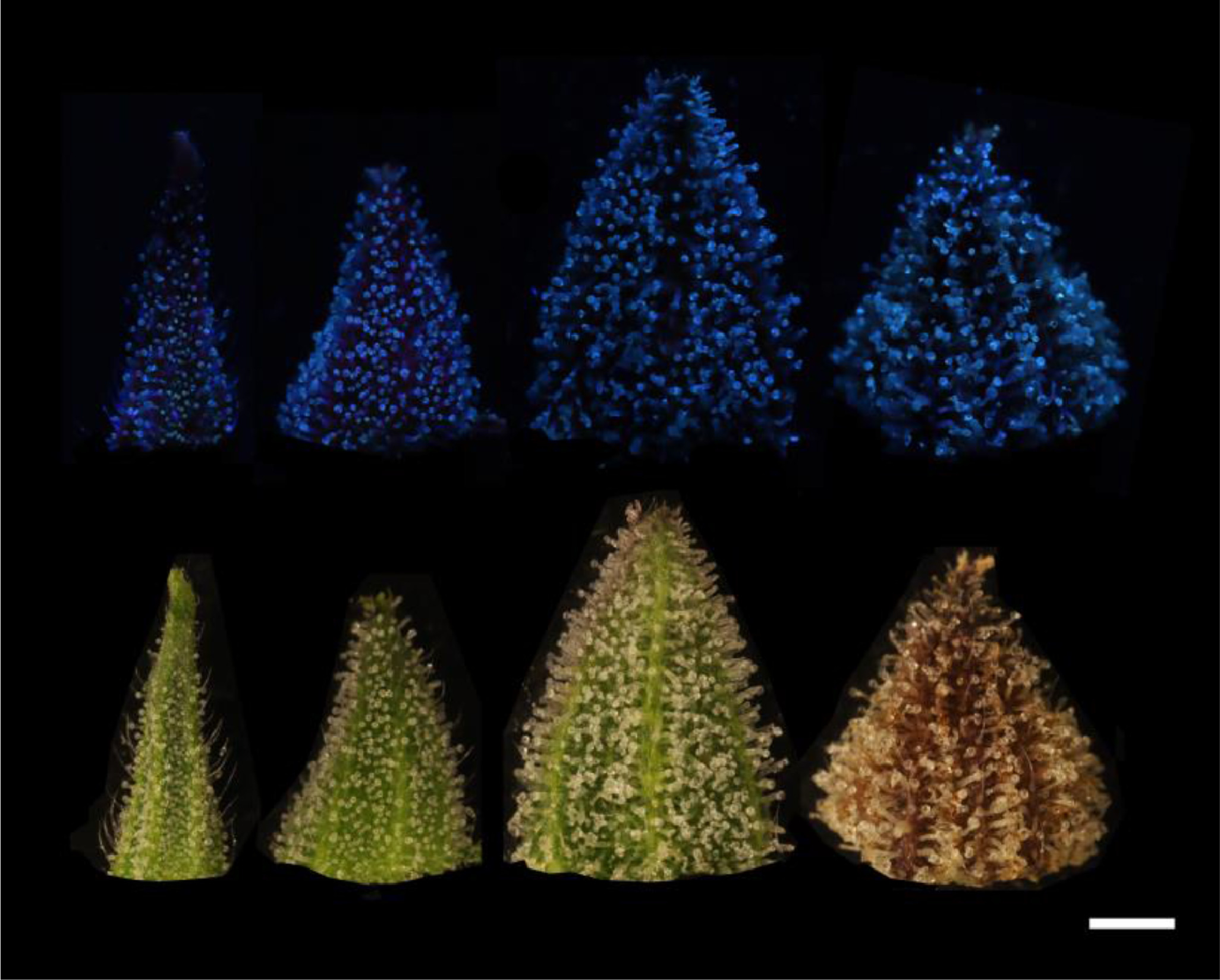Difference between revisions of "Template:Article of the month"
From CannaQAWiki
Jump to navigationJump to searchShawndouglas (talk | contribs) |
Shawndouglas (talk | contribs) (Updated article of the month text) |
||
| Line 1: | Line 1: | ||
<div style="float: left; margin: 0.5em 0.9em 0.4em 0em;">[[File: | <div style="float: left; margin: 0.5em 0.9em 0.4em 0em;">[[File:Fig3 Sutton SmartAgTech2023 3.jpg|220px]]</div> | ||
'''"[[Journal: | '''"[[Journal:Characterization of trichome phenotypes to assess maturation and flower development in Cannabis sativa L. by automatic trichome gland analysis|Characterization of trichome phenotypes to assess maturation and flower development in ''Cannabis sativa'' L. by automatic trichome gland analysis]]"''' | ||
[[ | ''[[Cannabis]]'' (''[[Cannabis sativa]]'' L.) is [[Cannabis cultivation|cultivated]] by licensed producers in Canada for [[Cannabis (drug)|medicinal]] and recreational uses. The recent legalization of this plant in 2018 has resulted in rapid expansion of the industry, with greenhouse production representing the most common method of cultivation. Female ''Cannabis'' plants produce [[inflorescence]]s that contain bracts densely covered by glandular [[trichome]]s, which synthesize a range of commercially important [[cannabinoid]]s (e.g., [[tetrahydrocannabinol]] [THC] and [[cannabidiol]] [CBD]), as well as [[terpene]]s. Cannabinoid content and quality varies over the eight-week flowering period to such an extent that the time of harvest can significantly impact product [[Quality control|quality]] ... ('''[[Journal:Characterization of trichome phenotypes to assess maturation and flower development in Cannabis sativa L. by automatic trichome gland analysis|Full article...]]''')<br /> | ||
<br /> | <br /> | ||
''Recently featured'': | ''Recently featured'': | ||
: ▪ [[Journal:Combined ambient ionization mass spectrometric and chemometric approach for the differentiation of hemp and marijuana varieties of Cannabis sativa|Combined ambient ionization mass spectrometric and chemometric approach for the differentiation of hemp and marijuana varieties of Cannabis sativa]] | |||
: ▪ [[Journal:Academic-industry partnership advancing cannabis science: The Complementary Care Practice-Based Research Network|Academic-industry partnership advancing cannabis science: The Complementary Care Practice-Based Research Network]] | : ▪ [[Journal:Academic-industry partnership advancing cannabis science: The Complementary Care Practice-Based Research Network|Academic-industry partnership advancing cannabis science: The Complementary Care Practice-Based Research Network]] | ||
: ▪ [[Journal:Beyond cannabinoids: Application of NMR-based metabolomics for the assessment of Cannabis sativa L. crop health|Beyond cannabinoids: Application of NMR-based metabolomics for the assessment of ''Cannabis sativa'' L. crop health]] | : ▪ [[Journal:Beyond cannabinoids: Application of NMR-based metabolomics for the assessment of Cannabis sativa L. crop health|Beyond cannabinoids: Application of NMR-based metabolomics for the assessment of ''Cannabis sativa'' L. crop health]] | ||
Revision as of 17:07, 31 July 2023
Cannabis (Cannabis sativa L.) is cultivated by licensed producers in Canada for medicinal and recreational uses. The recent legalization of this plant in 2018 has resulted in rapid expansion of the industry, with greenhouse production representing the most common method of cultivation. Female Cannabis plants produce inflorescences that contain bracts densely covered by glandular trichomes, which synthesize a range of commercially important cannabinoids (e.g., tetrahydrocannabinol [THC] and cannabidiol [CBD]), as well as terpenes. Cannabinoid content and quality varies over the eight-week flowering period to such an extent that the time of harvest can significantly impact product quality ... (Full article...)
Recently featured:
- ▪ Combined ambient ionization mass spectrometric and chemometric approach for the differentiation of hemp and marijuana varieties of Cannabis sativa
- ▪ Academic-industry partnership advancing cannabis science: The Complementary Care Practice-Based Research Network
- ▪ Beyond cannabinoids: Application of NMR-based metabolomics for the assessment of Cannabis sativa L. crop health
